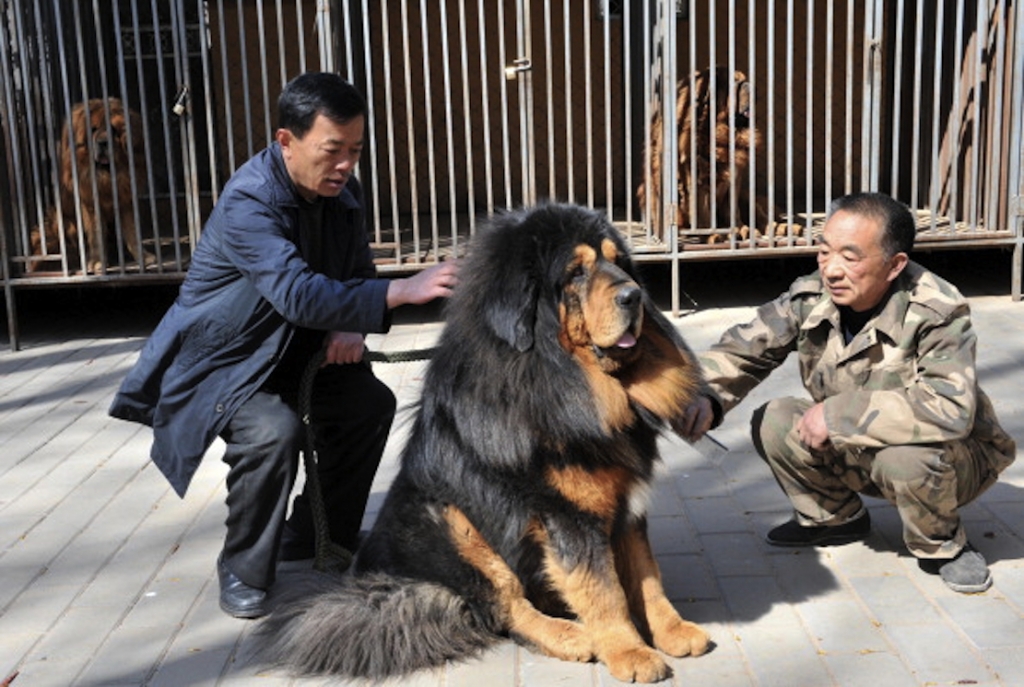-
Tips for becoming a good boxer - November 6, 2020
-
7 expert tips for making your hens night a memorable one - November 6, 2020
-
5 reasons to host your Christmas party on a cruise boat - November 6, 2020
-
What to do when you’re charged with a crime - November 6, 2020
-
Should you get one or multiple dogs? Here’s all you need to know - November 3, 2020
-
A Guide: How to Build Your Very Own Magic Mirror - February 14, 2019
-
Our Top Inspirational Baseball Stars - November 24, 2018
-
Five Tech Tools That Will Help You Turn Your Blog into a Business - November 24, 2018
-
How to Indulge on Vacation without Expanding Your Waist - November 9, 2018
-
5 Strategies for Businesses to Appeal to Today’s Increasingly Mobile-Crazed Customers - November 9, 2018
First domesticated dogs came about 33000 years ago and migrated to Europe
Man’s best friend came about after generations of wolves scavenged alongside humans more than 33,000 years ago in south east Asia, according to new research.
Advertisement
What they found was that 15,000 years ago-roughly 18,000 years after a gray wolf first made contact with humans in Asia-a small pack of ancestral dogs started migrating to the Middle East, Africa, and Europe, and reached Europe about 10,000 years ago.
Since long, scientists were baffled over how the best friend of man came into existence, but there has been a conflicting proof on when and where wild wolves were tamed for the first time.
These included 12 grey wolves, 12 indigenous dogs from the north Chinese countryside, 11 from south-east Asia, four village dogs from Nigeria and 19 specimens of selective breeding from Asia, Europe and the Americas, including the Afghan hound, the Siberian husky, the Tibetan mastiff, the chihuahua and the German shepherd.
Some researchers say canines first split off from wolves in Europe; others say it happened in the Middle East. But population genetics expert Peter Savolainen, of Sweden’s KTH Royal Institute of Technology, is hoping his latest research will finally settle the matter.
The origin of dogs has inspired a lingering controversy in academia.
It was found that dogs from southern East Asia displayed the most genetic diversity.
Professor Savolainen said: ‘The study of Chinese indigenous dogs thus provide missing links that connect these three major stages’.
His team analysed the complete DNA of 12 grey wolves, 27 primitive dogs from Asia and Africa and a collection of 19 diverse breeds from across the world to show south east Asian dogs “have significantly higher genetic diversity compared to other populations”.
Although dogs may have initially been domesticated in China, they didn’t begin their spread around the world until about 15,000 years ago.
We find that dogs from southern East Asia have the same DNA types that are found in dogs all over the world, but also unique types that we don’t see anywhere else (…) We saw that in the mitochondrial DNA, and now we see it in the genomic DNA as well.
Dogs from one of these groups then travelled back towards northern China, where they encountered Asian dogs that had migrated from South East Asia. In the said region, the dogs interbred with the locals before it migrated to the Americas.
This, in particular, is strong evidence that the dog originated in this region. After calculating how long it takes a certain number of mutations to appear in the genome, they concluded that the time of the split was 33,000 years ago.
The study said domestic dogs have followed us to every continent of the world and, as a single species, embodies one of the largest collections of DNA diversity on earth.
One of the lineages that evolved outside Asia also migrated back to the East, creating a several admixed populations.
Advertisement
Savolainen, along with 14 other scientists, recently published the scientific article “Out of Southern East Asia: The Natural History of domestic dogs across the world”. It’s clear where the dog’s evolutionary journey begins, but how and where dogs first became domesticated several thousand years later remains unsettled.




























